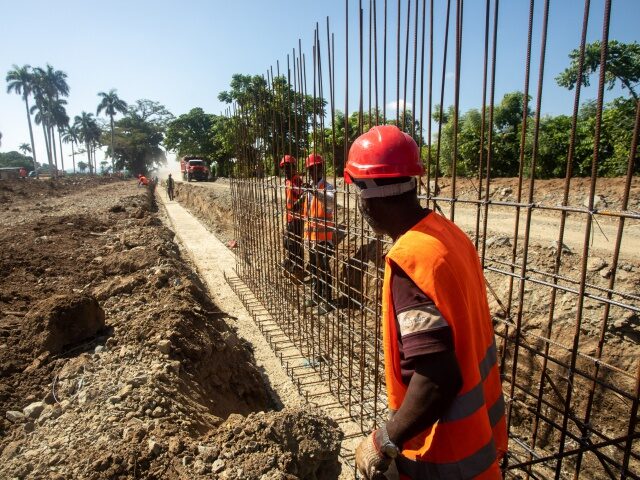Dominican Republic Building Over 100 Miles of Border Wall to Stop Illegal Immigration from Haiti:
The Dominican Republic is building a 13-foot-high border wall — set to be the second-longest border wall in the Americas — in the hopes of ending waves of illegal immigration from Haiti.
The government of the Dominican Republic began building the border wall in February to put a halt to illegal immigration from Haiti, which citizens have said is overwhelming their small communities, depressing wages, and undercutting their quality of life.
The concrete and steel wall, when finished, will stand 13 feet tall, and stretch just over 100 miles. The only other existing border wall in the Americas that is longer is the United States-Mexico border wall.
One citizen of the Dominican Republic told Bloomberg that he is tired of Haitians overwhelming his small hometown and leaving trash along the streets:
Riverón, a burly, graying man of 50, describes his town, Dajabón, as a flash point of the immigration debate that’s raging in societies across the globe — in Poland, Hungary, Chile, the US — after the pandemic sank hundreds of millions of people deeper into poverty in developing countries. Riverón knows that his tiny town wouldn’t exist without the cross-border trade with Haiti and yet, in language that borrows from the playbook of Donald Trump and Viktor Orban, he says everything is spinning out of control now. Haitians fleeing the poorest country in the Americas — one beset by the world’s worst levels of food insecurity, an all-but failed government and land made infertile by deforestation and climate change — are, as he sees it, overwhelming local hospitals, strewing garbage on the street and depressing the wages earned by Dominicans. [Emphasis added]
“There are simply too many Haitians here,” he said on a recent afternoon. “I don’t want to use the word ‘invaded,’ but there are parts of this town that have been completely saturated.” [Emphasis added] --->READ MORE HERE
A 102-Mile Wall Is Separating an Island's Haves and Have-Nots:
The Dominican Republic is building a barrier to insulate one of the region’s most successful economies from chaos in Haiti.
Santiago Riverón likes to project the image of rugged, frontier lawman. The mayor of a bustling little outpost along the Dominican Republic’s border with Haiti, he’s partial to white cowboy hats and blue jeans. On the wall of his office hangs a Winchester pump-action shotgun.
It’s mounted just above a flag of the Dominican Republic, and it symbolizes, he says, the same thing as the border wall that’s being built just miles down the road: “our sovereignty.” When finished, the wall, an imposing 13-foot-tall structure built out of concrete and steel, will stretch some 102 miles (164 kilometers), blanketing all but the most inhospitable parts of the frontier. Only one border wall in all of the Americas — the one separating the US from Mexico — is longer.
Riverón, a burly, graying man of 50, describes his town, Dajabón, as a flash point of the immigration debate that’s raging in societies across the globe — in Poland, Hungary, Chile, the US — after the pandemic sank hundreds of millions of people deeper into poverty in developing countries. Riverón knows that his tiny town wouldn't exist without the cross-border trade with Haiti and yet, in language that borrows from the playbook of Donald Trump and Viktor Orban, he says everything is spinning out of control now. Haitians fleeing the poorest country in the Americas — one beset by the world’s worst levels of food insecurity, an all-but failed government and land made infertile by deforestation and climate change — are, as he sees it, overwhelming local hospitals, strewing garbage on the street and depressing the wages earned by Dominicans.
“There are simply too many Haitians here,” he said on a recent afternoon. “I don’t want to use the word ‘invaded,’ but there are parts of this town that have been completely saturated.” --->READ MORE HERE
If you like what you see, please "Like" and/or Follow us on FACEBOOK
here, GETTR
here, and TWITTER
here.



No comments:
Post a Comment